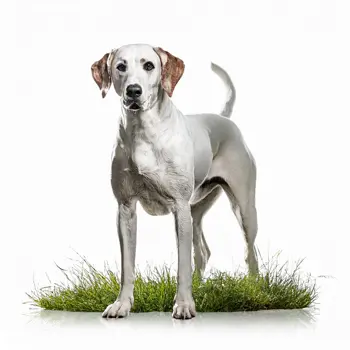The Ariege Pointer is known by several names that reflect its French heritage and hunting purpose. The most commonly used official name is Braque de l'Ariege, which directly references both the breed's pointing classification and its geographic origin in the Ariege department of southwestern France. The word braque in French specifically denotes pointing dogs, distinguishing them from other hunting breeds that track by scent or course by sight. This terminology connects the breed to the larger family of French braques that developed across different regions of the country.
Additional names for this breed include the Ariege Pointing Dog, which provides an English translation of its function and origin. Some references also call the breed the Toulouse Braque or Braque du Midi, acknowledging its development in the broader southern France region. The historical association with Toulouse comes from the breed's early development near this major city, where a life-sized sculpture of the ideal Ariege Pointer was created and still resides at the School of Veterinary Medicine. These alternative names reflect the breed's deep roots in the culture and hunting traditions of southern France.
Recognition of the Ariege Pointer by major kennel organizations has grown over the decades as the breed recovered from near extinction. The Federation Cynologique Internationale recognizes the breed in Group 7 as a Continental Pointing Dog of the braque type. The first breed standard was written in 1905 during the Societe Canine du Sud-Ouest dog show, establishing official guidelines for what constitutes a proper specimen of the breed. This early standardization helped preserve the breed's distinctive characteristics during periods of population decline.
The United Kennel Club recognized the Ariege Pointer in 2006, providing important international acknowledgment for this rare breed. This recognition has helped raise awareness among hunters and dog enthusiasts outside of France who might appreciate the breed's unique qualities. The UK Kennel Club also recognized the breed in 2006, further expanding its presence on the international stage. Despite these recognitions, the Ariege Pointer remains quite rare outside its native France, with the majority of the population concentrated in southwestern regions.
The American Sloughi Association and similar breed-specific organizations work to promote and preserve the Ariege Pointer's heritage. A breed club established in 1989 has been instrumental in ensuring the breed's survival and maintaining pure bloodlines free from the English Pointer influence that once threatened to dilute the breed's distinctive characteristics. These organizations provide resources for prospective owners, connect breeders, and advocate for responsible breeding practices that prioritize health and breed type.
The breed's rarity means that finding Ariege Pointers outside of France remains challenging, though a few specimens have made their way to enthusiastic hunters in other countries. The preservation efforts that began in the 1990s have been successful enough that the breed is no longer considered endangered, though vigilance remains necessary to maintain genetic diversity and population numbers. Recognition by international kennel clubs has played an important role in this recovery by legitimizing breeding programs and encouraging interest in this exceptional hunting dog.

